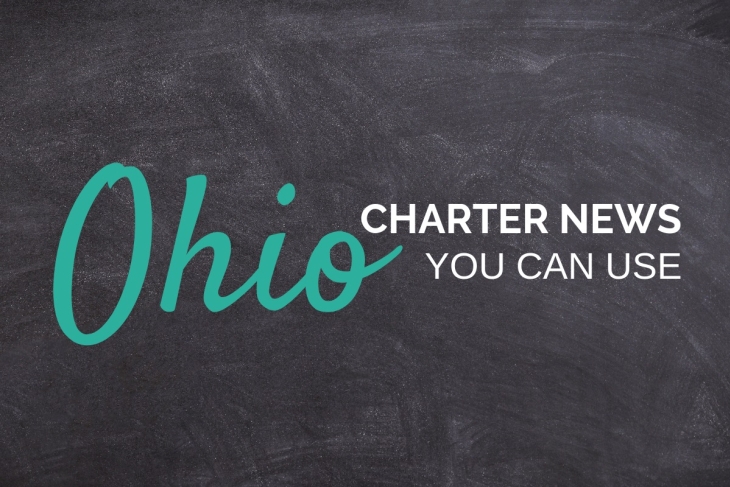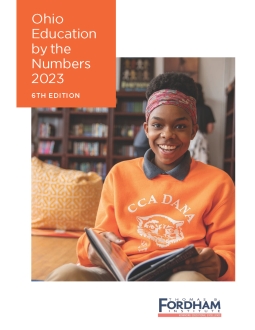- Chad Aldis is among the analysts speaking on the topic of House Bill 11 in this piece. Specifically: On the projected cost of the so-called “backpack funding” bill, which could, at max, fill the education backpacks of our students to the tune of ten figures. (Columbus Dispatch, 3/7/23)
- That sure seems like a big number, doesn’t it? It represents tens of thousands of families from every corner of Ohio, all of whom would have to want some alternative to their assigned district school for that maximum number to be reached. But is that the case? It seems that the state’s chronic absenteeism data might support that conclusion, per this piece. And what does one of our august elected state school board members say about the post-pandemic acceleration of this pre-existing trend toward students simply disappearing? It is “unfair to cite such numbers” because “You cannot turn a ship on a dime.” (Advertiser-Tribune, 3/5/23) But why do even the backpack haters think so very many families want to get off the default education hamster wheel? Perhaps the game of hot potato currently being played out very publicly between Dayton City Schools and the Regional Transit Authority over who needs to transport kids to school is part of it. Bonus points for the irony of Dayton’s supe saying “It’s the law” to bus all students while wildly flouting even the tiny bit of that law they are bothering to try to follow and ignoring the mounting fines for all of the days that they have failed to do so. (Dayton Daily News, 3/6/23) Of course, district-school-attending students are not the only ones being impacted by transportation troubles—in Dayton and elsewhere. But who cares about charter and private school kids, amiright? (WDTN-TV, Dayton, 3/7/23) Meanwhile, there’s a very quiet bus driver strike underway in tiny Morgan Local Schools this week. School was cancelled on Monday, but back in action with parents required to provide their own transpo on Tuesday. Attendance was said to be approximately fifty percent, although the union flack seems to
hopebelieve it was way less than that. Hope everyone was able to make it to the picket line on time and didn’t get lost on the way. (Marietta Times, 3/8/23)
- Surprisingly, it’s not all bad news from our traditional school districts. If your children are fortunate enough to be assigned to one of these three Lima City Schools elementary buildings, things look pretty good. Math and reading skills are up across the board in each. How’d they manage this minor miracle? A “systematic approach to identifying areas for improvement” (that is, daily testing), “developing and implementing strategies to address those areas” (that is, using computer adaptive programs to tailor instruction to the student’s level), and “evaluating the effectiveness of those strategies” (that is, summative assessments that measure progress toward reaching state standards). See? Easy. (Lima News, 3/6/23) Not only is this information good news from some of our schools, but it’s also good news that it’s being featured in the news. Here’s another one that seems pretty good at first blush, but since the adults are loving this educational-game-projector thingy too, it will probably turn out to be more toy than actual learning tool. (Toledo Blade, 3/6/23)
- It’s always amusing watching traditional school districts try to embrace school choice and alternative academic programs like they know what they’re doing. Such as this fun example from Toledo City Schools, whose efforts at new STEM and arts-focused programs (among others) still have no firm start dates or homes. “The timeline is what it is supposed to be, based on whatever due diligence is required to make sure we get it right,” said an elected school board member philosophically. It’s kinda like watching your toddler try on her mother’s high heels and stumble around the house. (Toledo Blade, 3/3/23) Speaking of Toledo City Schools, here’s a look at the status of the HOPE Toledo college scholarship program in Frogtown. Seems good for where it is, I guess, but it feels like perhaps the marijuana entrepreneur who provided the seed money for the program may have moved on to greener pastures…or perhaps the profit margins in the weed business are not as high as they once were. City and school officials are said to be looking for more money to continue the program’s
very existencegrowth so it doesn’t go up in smoke. (Toledo Blade, 3/7/23)
Did you know you can have every edition of Gadfly Bites sent directly to your Inbox? Subscribe by clicking here.









